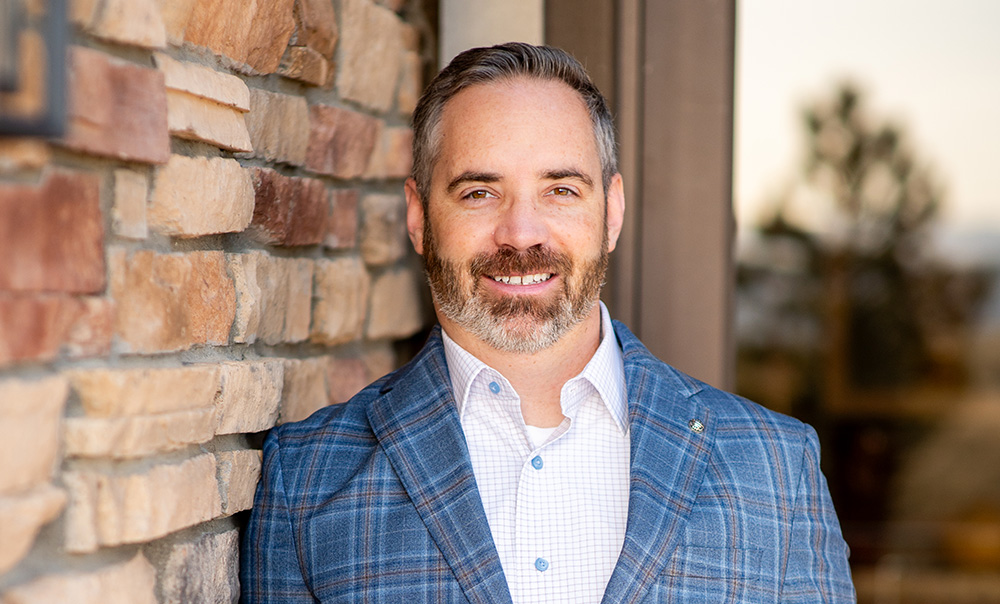At A Glance
Third-party data has moved from a fast-growth, loosely governed environment into one defined by trust, transparency, and compliance. Marketers are now looking for partners with institutional experience and rigorous data standards—not opportunistic providers chasing short-term gains. The brands that win will treat responsible data sourcing as the foundation of their customer strategy.How third-party data has changed and why it matters in 2025
For years, third-party data operated in an expansive, lightly regulated marketplace: fast-moving, high-growth, and filled with players eager to capitalize on digital marketing’s demand for audience insights.
That era is over. Regulatory scrutiny, stricter compliance standards, and rising consumer expectations have already transformed the market. Today, third-party data belongs to partners with proven expertise and built-in compliance. This isn’t a space for opportunistic newcomers; it’s one that rewards long-term commitment and trust.
Even the rapid rise of retail media networks (RMNs) reflects this shift. These platforms are built on long-standing, trusted relationships between brands, retailers, and data partners, utilizing that foundation in new ways to reach audiences responsibly and effectively.
The best providers have already made this transition; those still “shifting” are catching up.
From growth to governance: A market defined by accountability
The third-party data ecosystem has matured. After years of rapid expansion and recalibration, the market has stabilized around a new standard: data quality and regulatory accountability.
Third-party data enriches first-party insights with attributes such as income, gender, and interests that round out the customer view. But when the industry grew unchecked, unreliable providers diluted quality and trust. This resulted in a decline in the overall value and reliability of the third-party data marketplace.

That breakdown led directly to today’s privacy laws, now active across more than 20 U.S. states and numerous countries worldwide. These regulations reflect a permanent consumer expectation: relevance delivered responsibly. Consumers aren’t rejecting personalization; they’re rejecting how it’s been done in the past. They still want relevant, tailored experiences, but they expect brands to deliver them through ethical, transparent data practices.
Does third-party data still matter in a privacy-first era?
Third-party data isn’t disappearing, if anything, it’s become more important. Brands will always need additional insight to deepen customer understanding; first-party data alone only reflects what’s already known.
The industry has entered a mature phase where data quality and compliance are table stakes. The companies leading today built their data infrastructure on rigorous standards, regulatory foresight, and transparent governance.
That same foundation powers the next wave of innovation, including the explosive growth of RMNs. RMNs rely on responsibly sourced third-party data to enrich shopper insights, validate audiences, and extend addressability beyond their own walls. Trusted data partners make that expansion possible, connecting retail environments with broader media ecosystems while maintaining privacy and accuracy.
High-quality, compliant third-party data remains essential because it:
Advancements in AI and machine learning are reshaping how this data is used across the ecosystem. What was once primarily a buy-side tactic is now expanding into the sell-side, where publishers and platforms are using data to curate, package, and activate audiences more intelligently. As AI enhances modeling accuracy and automation, third-party data will play an even greater role in connecting brands and consumers in more meaningful, privacy-conscious ways.
The bottom line: it’s not about having more data; it’s about having better, verified data you can trust.
How can you spot a trustworthy data partner?
The strongest third-party data partners demonstrate accountability through experience, infrastructure, and integrity.
Look for providers that:
Why the future of third-party data depends on accountability
The third-party data industry has already crossed the threshold from expansion to accountability. The companies leading this era have established their credibility through governance and proof. The future belongs to providers that:
- Build with regulatory foresight
- Maintain rigorous quality assurance
- Prioritize partnership over profit
The Wild West days are long gone. The third-party data ecosystem is now defined by stability, transparency, and shared responsibility.
Partner with Experian for data you can trust and results you can prove
When accuracy and accountability define success, you need a partner built on both. Work with the company that’s setting the standard for responsible data-driven marketing and helping brands connect with people in meaningful, measurable ways.
Get started
About the author

Jeremy Meade
VP, Marketing Data Product & Operations, Experian
Jeremy Meade is VP, Marketing Data Product & Operations at Experian Marketing Services. With over 15 years of experience in marketing data, Jeremy has consistently led data product, engineering, and analytics functions. He has also played a pivotal role in spearheading the implementation of policies and procedures to ensure compliance with state privacy regulations at two industry-leading companies.
Third-party data FAQs
Third-party data is information collected by organizations that don’t have a direct relationship with the consumer. It supplements first-party data by adding demographic, behavioral, and interest-based insights.
Privacy regulations are reshaping data practices because consumers expect control over how their information is used. That expectation led directly to today’s privacy laws, now active across more than 20 U.S. states and numerous countries worldwide. These regulations reflect a permanent consumer expectation: relevance delivered responsibly. Consumers aren’t rejecting personalization; they’re rejecting how it’s been done in the past. They still want relevant, tailored experiences, but they expect brands to deliver them through ethical, transparent data practices. Laws like the CCPA and state-level privacy acts enforce this expectation, holding brands and data providers accountable for the ethical use of data.
Yes, brands can still use third-party data safely when sourced responsibly. Partnering with established, compliant providers like Experian ensures both legal protection and data accuracy.
Experian adheres to a set of global data principles designed to ensure ethical practices and consumer protection across all our operations. At Experian, privacy and compliance have long been built in. Every partner and audience goes through Experian’s rigorous review process to meet federal, state, and local consumer privacy laws. Decades of experience have shaped processes that emphasize risk mitigation, transparency, and accountability. Experian’s relationships with demand-side platforms (DSPs), supply-side platforms (SSPs), and even social platforms like Meta, ensures we are aware of any platform-specific initiatives that may impact audience targeting. We’re also active participants in many trade groups to ensure that the industry puts ethical data practices in place to ensure consumers still receive personalized experiences but their data usage and collection is opt-in, transparent and handled with their privacy at the center of the transaction.
Marketers should look for transparency, longevity, and evidence of compliance when looking for a data partner. The best partners can clearly explain how their data is sourced, validated, and maintained. Read Experian’s guide on how you can swipe right on the perfect data partner here.
Latest posts

What generation already has 68 million consumers, is set to be the largest generation ever, and $360 billion of disposable income? While you may think these attributes describe millennials, they are actually a portrait of Generation Z, better known as Gen Z, the newest generation that is emerging in the marketplace. Gen Z is beginning to make an impact worthy of focusing your next auto marketing campaign around. Gen Z and the automotive market Made up of consumers born after 1996, Gen Z is ready to be noticed and become a force to be reckoned with in the market. In the automotive market alone, Gen Z made up 3.8 percent of all new vehicle registrations in the first quarter of 2019. While that number may seem small, consider the fact that in 2015—just four years ago—they only made up 0.5 percent of new vehicle registrations. These are statistics that should make automotive marketers pay attention. Digital consumption of Gen Z Most marketers tend to lump Gen Z with millennials – after all, they grew up with smartphones and social media, so how different can they be than the generation that came of age with the Internet? However, unlike millennials, Gen Z is considered a true “digital generation” – performing many of life’s day-to-day activities online. This means that they do a lot of research when shopping for a product. In fact, according to the Center for Generational Kinetics, 52 percent of Gen Z has looked at online reviews for a product while shopping in-store. But how do digitally native consumers impact automotive marketers? In order to sell cars, marketers’ messages need to be relevant. Like many other generations, Gen Z interacts with brands across a number of different devices and touchpoints. They’re constantly bombarded with messages and advertisements, so much so that it becomes information overload. Auto marketing to Gen Z To create consistent messages that resonate, brands need to communicate across these different touchpoints and tell a story that is relevant to your audience. For example, you wouldn’t show an advertisement of someone buying their dream sports car to a member of Gen Z. Most of these consumers are buying their first car, so it would typically make more sense to show them ads for economical, reliable, sedans or cross-over SUVs. Historically, automotive marketers have relied exclusively on CRM data, but this strategy isn’t effective when it comes to Gen Z, the fact of the matter is that they probably haven’t purchased a car from you previously. Identity resolution and Gen Z auto marketing The recipe for marketing success with Gen Z is identity resolution – combining your first-party identity signals across channels with third-party resources, as well as advanced technology, such as machine learning and artificial intelligence, to truly create and deliver campaigns that are relevant to the youngest generation. The more knowledge marketers have on your audience, such as demographics, life events and purchase behavior, enables them to tailor the messages to the audience in a way that will cut through the noise and resonate. As more members of Gen Z come into the marketplace, automotive marketers will want to ensure they’re meeting them where they are, delivering messages that matter to them. This will help marketers not only sell more cars, but also begin to create relationships that could last for years to come. Your identity resolution partner Experian is here to help you create an identity resolution strategy that will take your automotive marketing campaigns to the next level. We help brands put real people at the center of their business by resolving fragmented identity signals. Deliver personalized, relevant messages across channels to effectively target your ideal customers. Get started with identity resolution today! Contact us today

As summer fades, marketers are gearing up for another campaign cycle. It’s a process that repeats itself annually, but we can’t just copy-and-paste our plans. With each passing year, the media landscape changes drastically, as do the behaviors of the audiences we are trying to reach. As ever, marketers have to be strategic—and nimble—to reach the right customers at the right time, with messaging central to seasonal events and personal preferences. Marketers can ensure their messaging reaches the right customers with audience optimization. Reach target audiences this season It can be a hassle to create custom audience segments and bespoke creative messaging every time the seasons change, but now, more than ever, we must ensure brand campaigns are as timely, relevant and personalized as possible. In a world of multitasking and multiscreening, there’s an expectation among consumers that all communications they receive are relevant to them—especially from brands. This is why it’s critical to understand your audiences and how to engage them through the most effective channels. To help marketers win the battle for consumer attention—and sales—4C developed the Scope platform. This self-serve software arms brands with powerful tools for managing audiences and optimizing campaigns across channels including TV and digital. So, whether it’s building an efficient media plan, buying targeted ads, or measuring business outcomes, audience optimization is truly in scope. Deliver audience-based marketing messages across the TV and video space Recently, 4C teamed up with Experian to expand our audience marketplace across linear TV, OTT and social media. Brands using the Scope by 4C™ platform can leverage Experian data across a variety of planning and buying use cases, including audience-based linear TV planning and programmatic scatter buying; OTT campaigns across FreeWheel, Telaria, and SpotX; and social advertising on Facebook, Twitter, and Pinterest. Scope’s TV Planner allows marketers to combine historical cost and ad occurrence data with Experian audiences to create customized TV plans in minutes. The outputs go beyond GRPs to maximize in-target impressions for a secondary audience as well as indexing high against the primary demo. With audience-based TV planning brands can truly maximize their upfront buys and use the fantastic reach of linear television for seasonal performance marketing, not just brand awareness. OTT harnesses the big-screen, living-room impact of TV with the targeting precision and flexibility of digital. By using Experian segments to create OTT audiences in Scope, brands can really focus on creative strategy, using the immersive power of video to drive specific business outcomes. From a social perspective, we can combine the pinpoint targeting marketers have come to rely on from platforms like Facebook with advanced segmentation enabled by Experian. The output is high-performing audiences that can be reached at scale with dynamic creative to achieve unparalleled ROI. Focus marketing strategies on audience optimization this season Leveraging customized audiences across channels is the modern approach to marketing and has completely shifted the way marketers target consumers. With the relationship between 4C and Experian, there is now a better way for marketers to identify the most valuable potential customers, uncover the most appropriate messaging, and execute campaigns across the most engaging channels – during peak seasonal campaigns and every single day. Contact us today

With Tapad, part of Experian, technology, AdsWizz AudioMatic is the first Audio buying platform to offer cross-device identity resolution across the U.S. and EMEA NEW YORK and LONDON, July 17, 2019 /PRNewswire/ — Tapad, part of Experian and a global leader in digital identity resolution, today announced a new joint capability with AdsWizz , the leading technology provider for digital audio advertising solutions. The partnership combines Tapad's digital cross-device technology with AdsWizz's AudioMatic buying platform, enabling the ability to connect audio ad experiences across screens. AudioMatic, AdsWizz's audio-centric buying platform, supports programmatic audio buying and entirely new audio ad experiences for listeners. The integration of The Tapad Graph onto its platform enables new opportunities for marketers to reach, engage and measure each interaction with their desired consumers on digital radio and podcasts channels, and across devices. This partnership makes AdsWizz the first audio buying platform to offer this enhanced cross-device identity capability in the US and EMEA markets. "Marketers need privacy-safe digital identity resolution to reach their consumers," says Tom Rolph, VP of EMEA at Tapad. "With audio becoming an increasingly powerful medium for engagement, it's important that our technology extends to this channel, which is why we are excited to announce our integration with AdsWizz's AudioMatic platform." Digital audio is experiencing high growth, with 84% of advertisers and agencies saying it will play a bigger role in their media plans in the future. Today, 60% of digital audio is consumed via a mobile device.* The Tapad Graph is the largest digital identity resolution graph with differentiated global scale. The partnership enables audio advertisers to leverage The Tapad Graph for enhanced attribution, analytics, and targeting. Alexis van der Wyer, CEO at AdsWizz, added, "Digital audio is increasingly becoming ubiquitous in our media consumption and in our daily digital interactions, and because of that, audio advertising offers tremendous opportunity to personally interact with consumers in every moment of their daily lives. By integrating with Tapad, we enable our advertising partners to increase the effectiveness and the relevance of their marketing messages across audio channels." To learn more about Tapad and our digital identity resolution products, visit our identity solutions page. *Digital Audio Exchange, "The Rise of Digital Audio Advertising," https://thisisdax.com/wp-content/uploads/2019/07/DAX-Whitepaper.pdf About Tapad Tapad, Inc. is a global leader in digital identity resolution. The Tapad Graph, and its related solutions, provide a transparent, privacy-safe approach connecting brands to consumers through their devices globally. Our one-of-a-kind Graph Select offering enables marketers the flexibility and freedom of choice to correlate devices to varied objectives, driving campaign effectiveness and business results. Tapad is recognized across the industry for its product innovation, workplace culture and talent, and has earned numerous awards including One World Identity's 2019 Top 100 Influencers in Identity Award. Headquartered in New York, Tapad also has offices in Chicago, London, Oslo, Singapore and Tokyo. About AdsWizz: AdsWizz has created the end-to-end technology platform that is powering the digital audio advertising ecosystem. AdsWizz powers well-known music platforms, podcasts and broadcasting groups worldwide with a comprehensive digital audio software suite of solutions that connect audio publishers to the advertising community. From dynamic ad insertion to advanced programmatic platforms to innovative new audio formats, AdsWizz efficiently connects buyers and sellers in digital audio. AdsWizz is headquartered in San Mateo, California, with an IT Development hub in Bucharest, Romania, and presence in 39 markets around the world. About AudioMatic: AdsWizz Demand Side, audio-centric DSP and audio buying platform, AudioMatic, enables programmatic audio buying and entirely new audio ad experiences that are proven to be more engaging and more effective, and have delivered measurable results for agencies and their brands all over the world. All the biggest ad agencies have used our programmatic trading platform, including Omnicom, GroupM, Havas, Publicis, Mobext, and more. Contact us today







